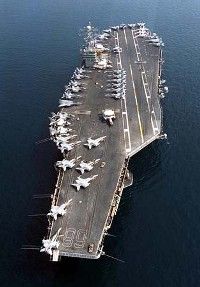
The summer's big movie blockbuster is "Top Gun: Maverick," which already has sold well over $1 billion in theater tickets worldwide, and seems to show no signs of slowing down, according to Variety. The film stars Tom Cruise as an older, somewhat wiser version of the brash Navy pilot Pete "Maverick" Mitchell, the character he portrayed in the 1986 hit "Top Gun."
Though both "Top Gun" films are fictional, they're inspired by a real-life military aviation program, the U.S. Navy Fighter Weapons School, aka TOPGUN. The real TOPGUN, which the Navy started in 1969 in order to reduce combat losses in Vietnam, originally was based at what was then known as Naval Air Station Miramar in California, the setting for the first "Top Gun" film. That location is now a Marine Corps air base, and since the mid-1990s, TOPGUN has been located at Naval Air Station Fallon, Nevada.
Advertisement
While the location, the aircraft and the technology have changed over the years, the mission is essentially the same. TOPGUN aims to elevate the games of elite Navy fighter pilots, so they can go out as teachers and pass along state-of-the-art skills and knowledge to other Navy aviators, thus raising everyone else's tactical performance, according to the U.S. Department of Defense's website about the program.
"The best way to describe the ultimate purpose of TOPGUN is to ensure that Naval aviation is trained and ready, and has the tactics required to win in combat against any adversary, at any time," explains Commander Christopher "Pops" Papaioanu, a veteran Navy pilot and TOPGUN alumnus who served as the school's commanding officer in 2018-19.
To achieve that purpose, students at TOPGUN take one of three courses, according to Papaioanu. In addition to the strike fighter tactics instructors (SFTIs) course, the one that's depicted in the movies, there are two nine-week courses. In the first, some TOPGUN pilots learn to replicate the capacity and tactics used by other countries, so they can play the part of enemy fliers more realistically in Navy training exercises. In the second, students learn (via simulators) how to operate their sensors and provide the SFTIs with situational awareness to help guide their decision-making.
Graduates often go on to become instructors at the Navy's weapons schools, but they also help develop operational testing for new aircraft under development by putting them into tactical scenarios that show whether a fighter jet is capable of what it's supposed to do. And some are offered a chance to become instructors at TOPGUN itself.

Advertisement



